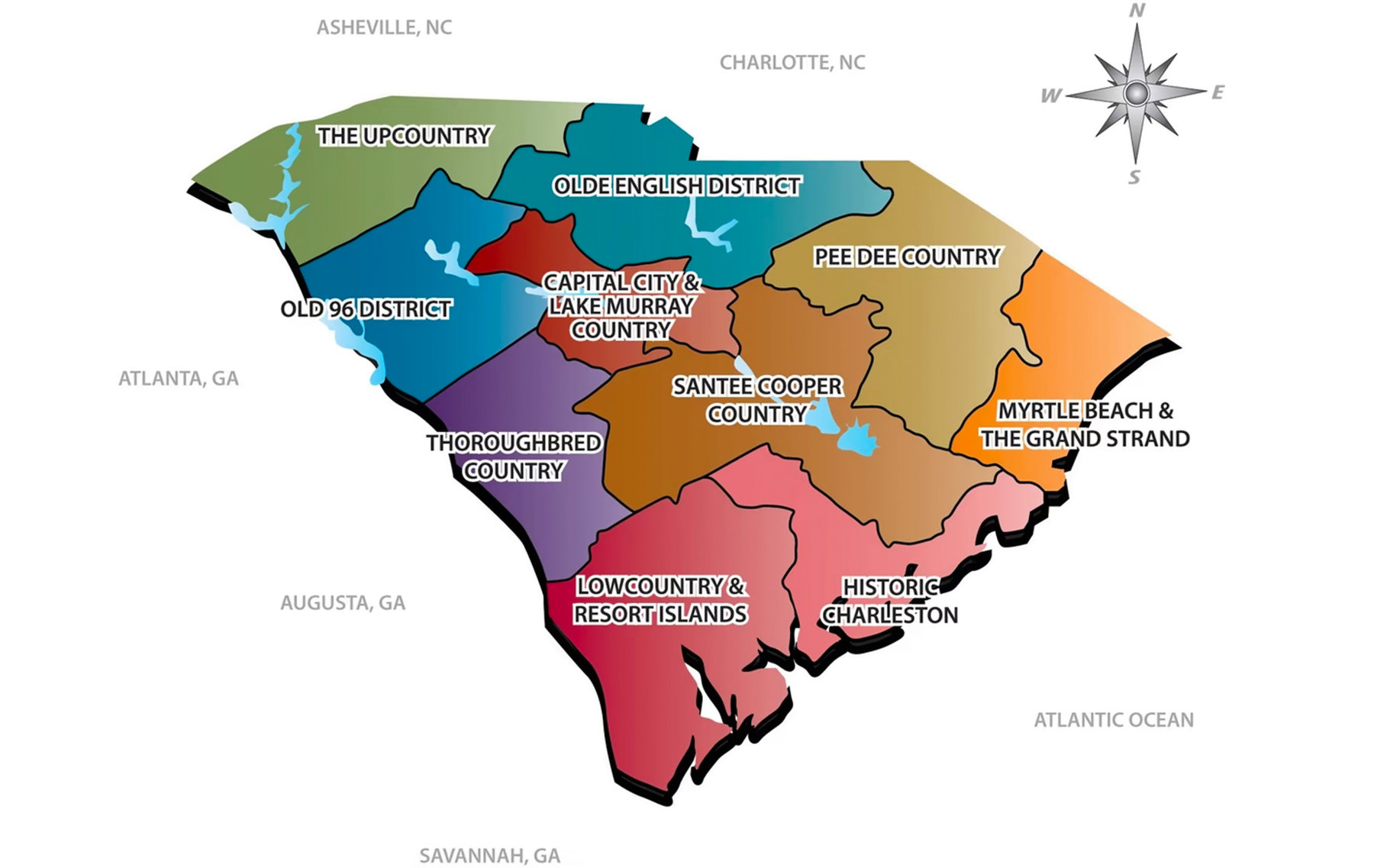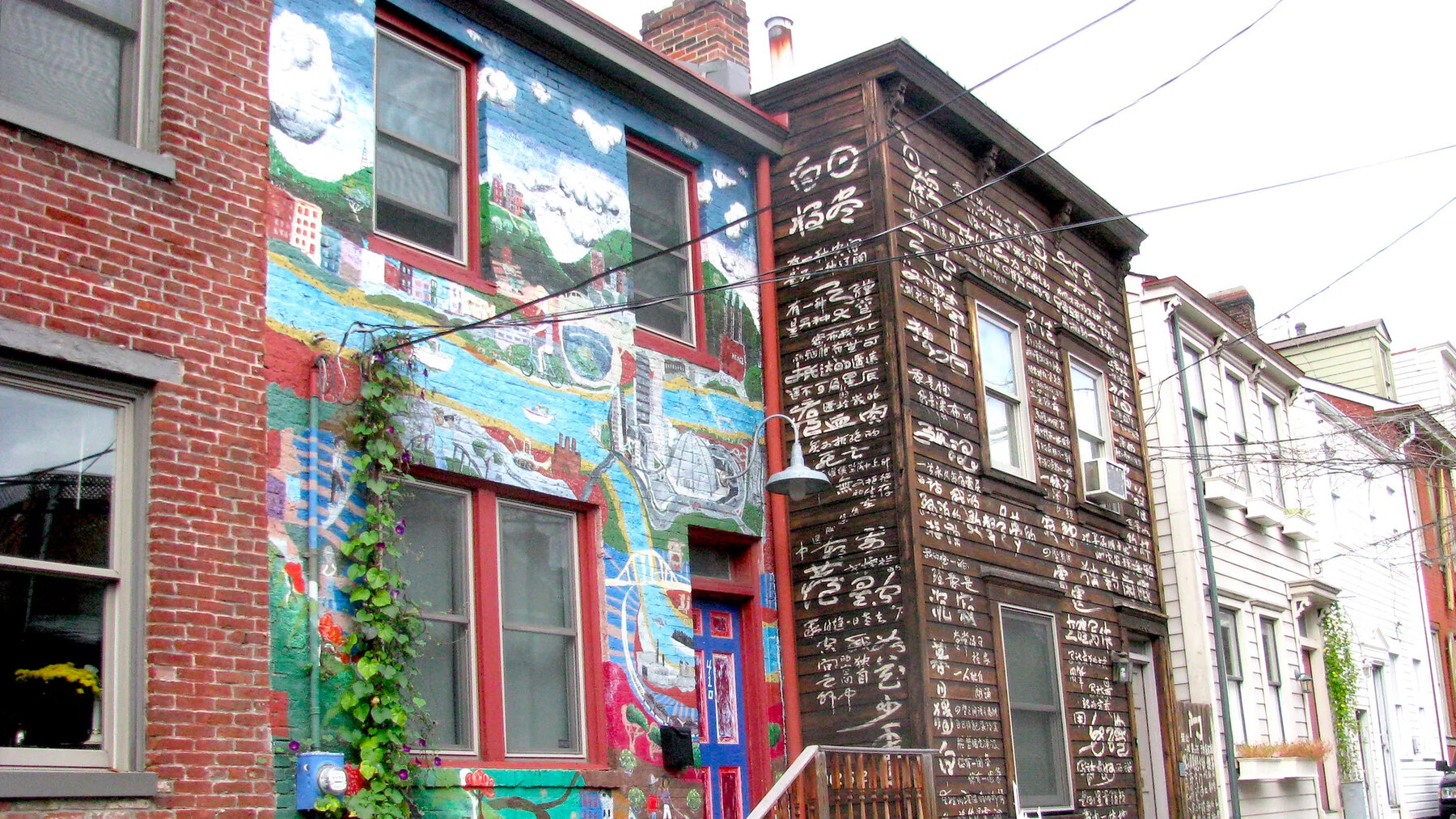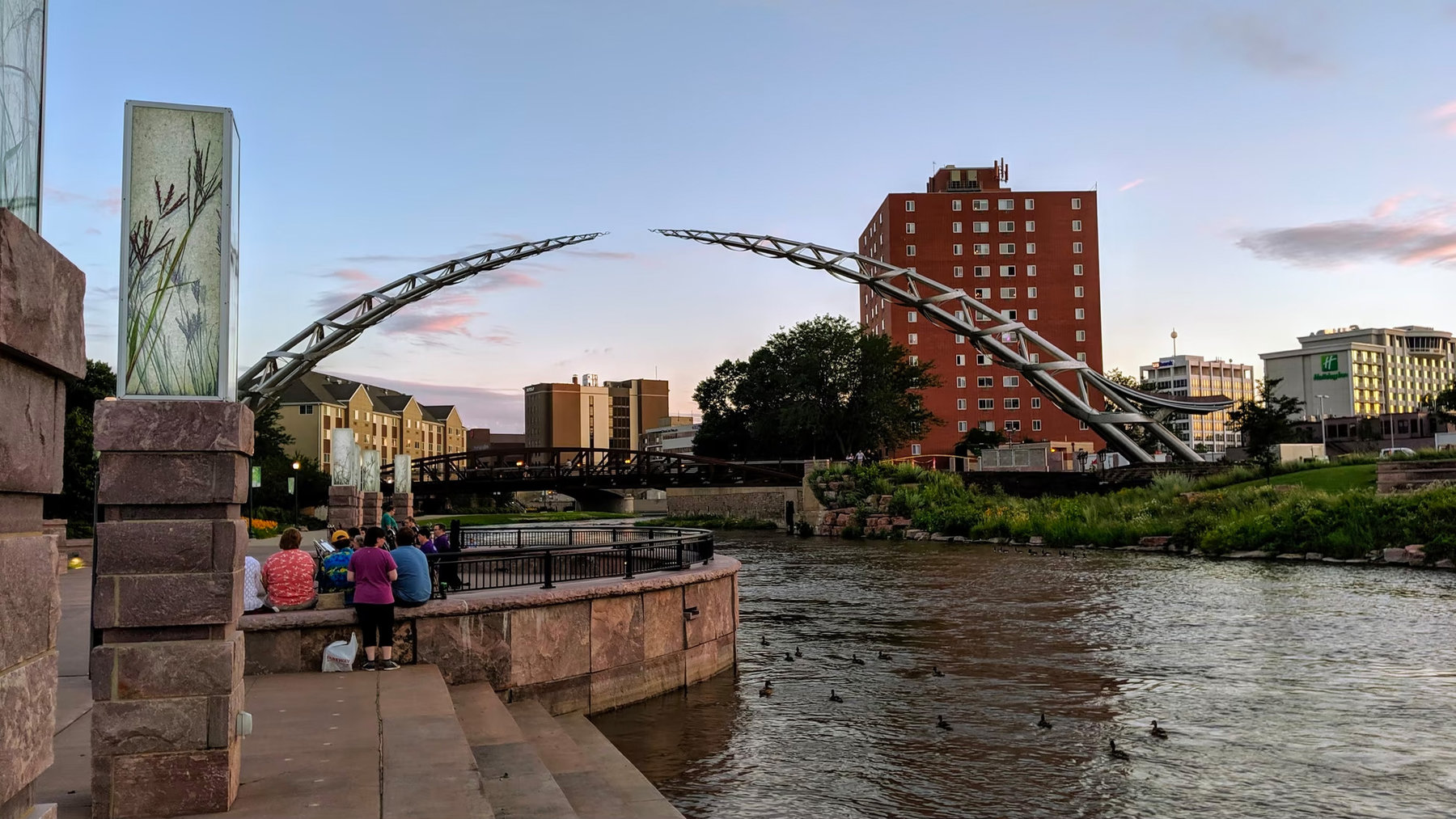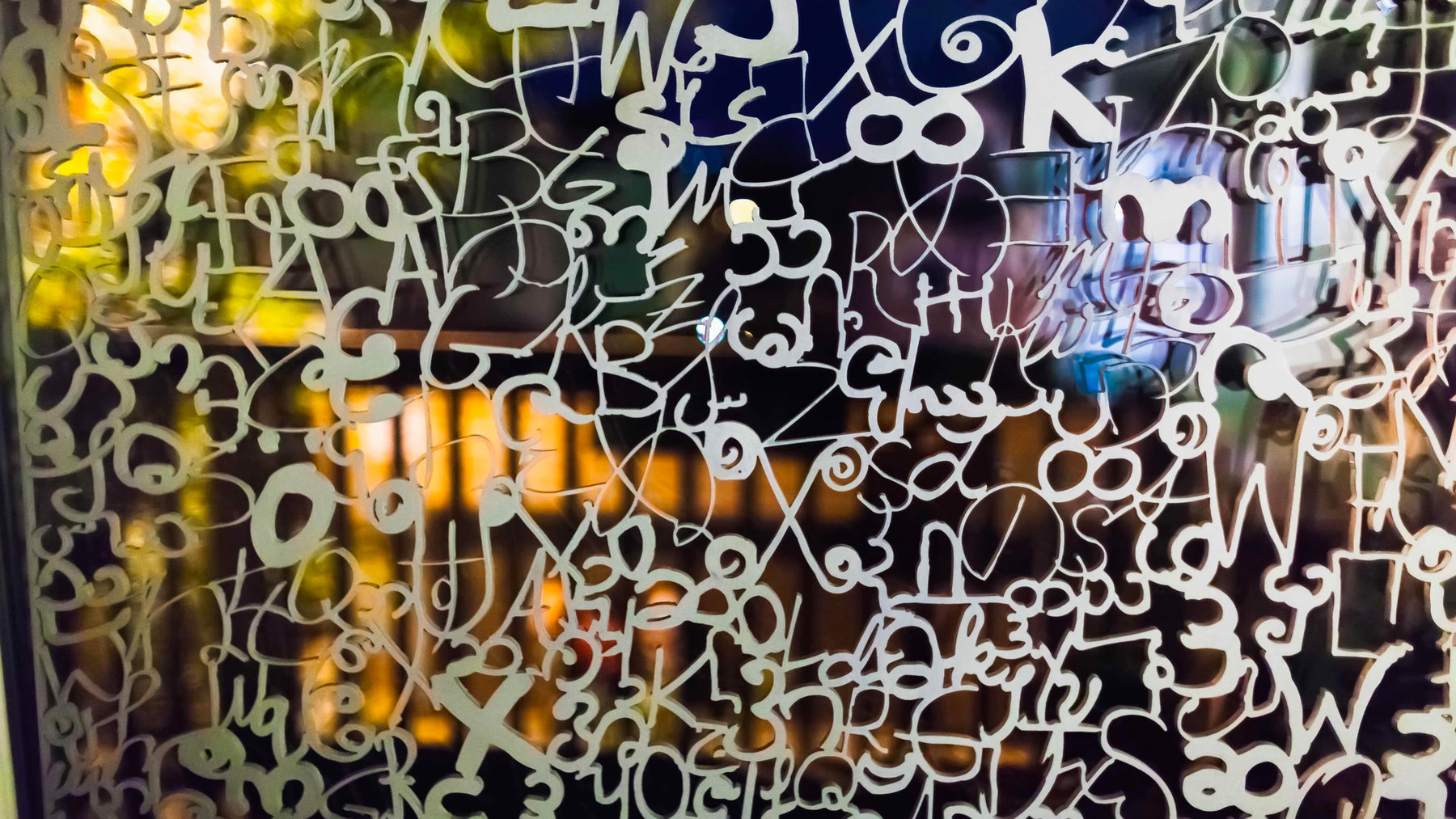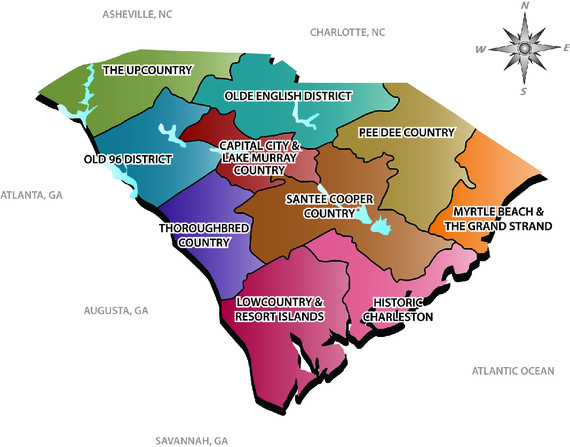
Greenville is located in the heart of The Upcountry of South Carolina. Colloquially, most people now seem to call this The Upstate. It’s not simply geographically upstate, as in “upstate New York,” but a moniker with strong cultural and historical references. The Upcountry or Upstate was the heartland of South Carolina’s now-diminished textile industry, and by their own description, the people are scrappy and hard-working. Besides referring to The Upstate, people in Greenville generally divided the rest of South Carolina into the Midlands, which includes Columbia, the capital; the Pee Dee, in the northeast and named for the native American Pee Dee tribe, and the Low Country, home of plantations and historic Charleston. It’s a smaller state, #40 of the 50 by size, but with a lot of internal variation.
I went to Greenville listening for what kind of southernisms I might hear. I wasn’t disappointed: the accent is alive and well, classic words and phrases abound, and best of all, the conversations are comfortably padded with folksy, southern expressions. You won’t regret watching the video below.

And here is something really bizarre. Again from the dialect study is question #80: “What do you call it when rain falls when the sun is shining?” Well, over half the people in the country don’t even have an expression for this. But in South Carolina, over 43% of people say ” the devil is beating his wife”.
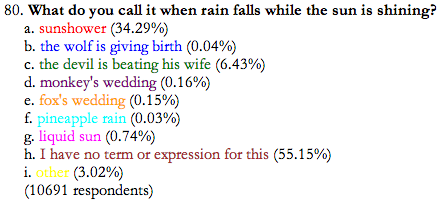
One question the survey didn’t ask, but I wish it had, is about greetings and introductions. In my own personally-conducted linguistic survey in Greenville (read: I asked around), several residents reported that the follow-up you’re likely to hear after “Hello” or “How do you do?” is “Where do you go to church?” I suspect this isn’t confined to the South. When I asked about the intention of this phrase in Greenville, two women I met went back and forth about its real meaning. They settled on some version of “Who are your people?” or “Where do you fit in?” That makes sense to me. If you have your own nomination for this after-you-say “How do you do?” question, send it along to me (contact details below) with your location, and we’ll make our own nationwide map.
The first we almost expected. Of the more than half dozen towns where we have spent time over the last several months, I would say they all share the trait of having intense pride for investing in, among other things, the revitalizing of the downtown space. This was true in Sioux Falls, Holland MI, Burlington VT, Rapid City, Eastport ME, and Redlands CA. This same sense of pride came through clearly in the thousand or so responses we received in the “nominate your town” request to suggest places we could visit. (Here was the original nominating page, still open for new suggestions.) People love their hometowns and what they are building there.
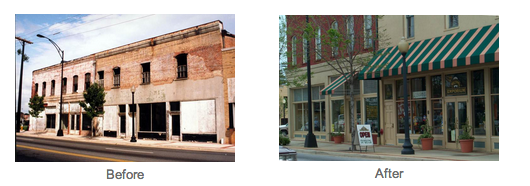
The second was unique, so far, to Greenville – the surprise from residents at how quickly and broadly their town has improved. Greenville reports on itself that it had a long way to go. The vision of Mayor Max Heller in the 1970s to rebuild the town after the collapse of the textile industry to one of culture, recreation, and commerce was beginning to see some results after a long decade. But even into the 1990s, people recounted to us, there were not many reasons to go to Main St., and there were a lot of reasons not to. There were few restaurants and lots of empty storefronts. The now elegantly-restored Westin Poinsett Hotel was “the tallest crackhouse in town” hitting its nadir after its demise from a grande-dame hotel to a retirement home to abandonment. The general warning from residents to each other was about the derelict nature of the southern edge of downtown, including the traffic bridge that crossed the Reedy River above its natural falls. “Don’t go near the bridge,” people today said that people used to say. Now, people generally marvel at the changes over the last 15 years.
Folksy language: You know you’re somewhere when people say, “Katy, bar the door!” in the middle of a conversation. And you know it’s a place where people don’t cautiously spoon out their language, wary of soundbites. Here is an example:
One piece of the plan for rebuilding Greenville included demolishing the traffic bridge over the Reedy River, a bridge that hid the view of the falls beneath it, and for prettying up the space around the falls with a park complex. Fifteen years of controversy roiled over an idea that was embraced by some and met with strong resistance by others. “Why take down a perfectly good bridge?” asked a group of people who were happy to let things be, and who didn’t see river revitalization as an attractive proposition. “The River, Yuck!” as it was “all kudzu and poison ivy.” By today’s retelling, these folks were all about “Katy, bar the door!”
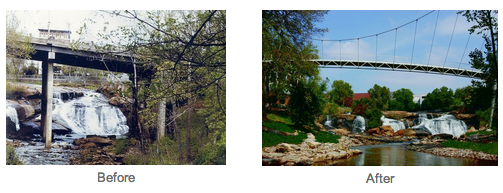
Well, the bridge did get demolished, the new Falls Park area with the elegant pedestrian Liberty Bridge was dedicated in 2004. And so much more was developed or restored: the Swamp Rabbit Trail along an old rail bed for runners, walkers and bikers, the Peace Center for the arts, old textile mills, the restaurants and brew pubs, specialty shops selling everything from Jerky to ice cream, the ice rink, the Fluor Field, the in-town baseball stadium which is now a bookend to the west-end (which is actually to the south) development. “It used to be a mile’s a ways out,” but now walking that distance to the field suggests that expansion is going to continue a ways beyond that.
Newcomers and young returnees to Greenville vouch for its current coolness. One 20-something entrepreneur, Eric Dodds, whom Jim wrote about in a post on the start-up culture of Greenville, who had grown up in the town, left in a hurry for college, returned home on a visit and uttered a “Holy cow!” upon seeing the change. He has moved back.
Many people told us the stories of recruiting outsiders to Greenville for jobs in education, tech, and business of all sorts. The typical outsiders’ reaction, residents reported in a way that you know precedes a punch line, was always “Greenville, South Carolina? Are you kidding?” The finale was always something like: “Well, within a week, they had called a realtor and bought a house.”
The earthy language of Greenville has given me heart that American English has not become homogenized, and that regionalisms are alive and well.

